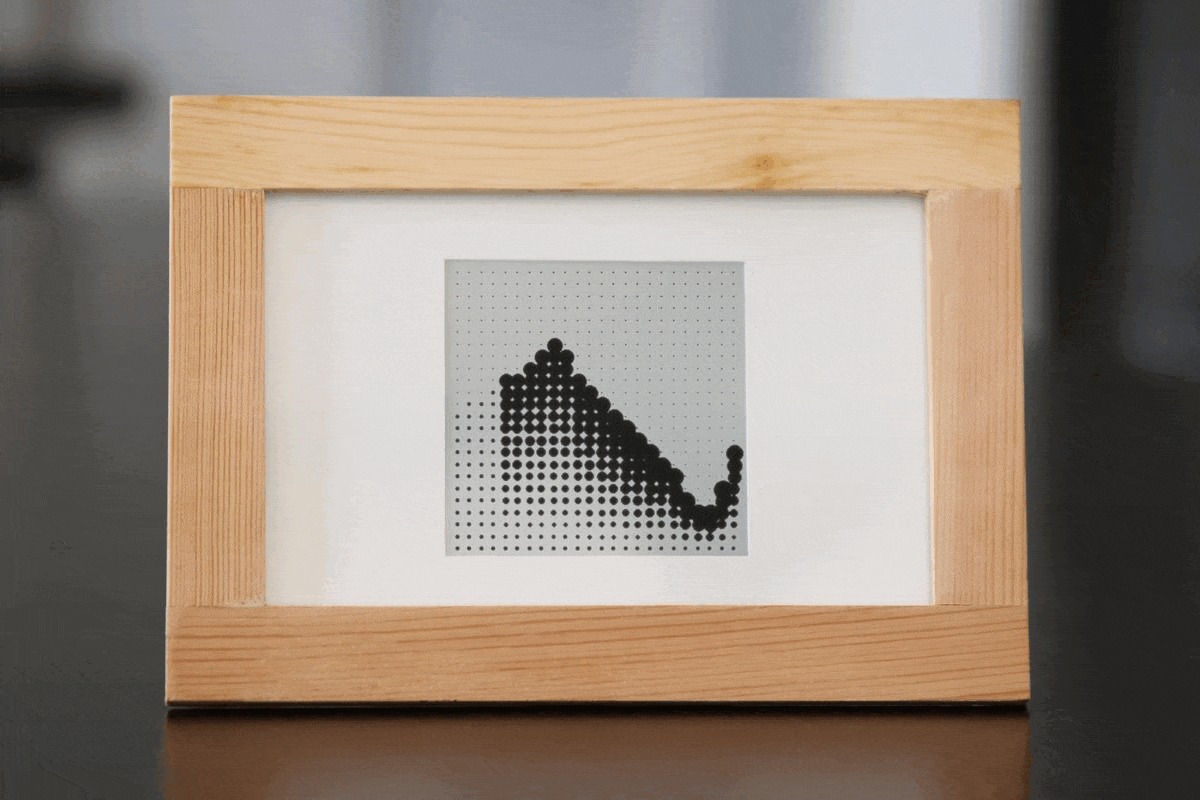Surf Grid is a Pi Frame app. It prints an abstract surf report in the style of Kōhei Sugiura to an e-ink display via Raspberry Pi.
Surf Grid relies on the WillyWeather API for location-specific wind, tide, and swell forecast data.
To run Surf Grid you need to first:
- Join a Wi-Fi network on your Raspberry Pi
- Enable SSH on your Raspberry Pi
- Plug in a Waveshare e-Paper or similar display to your Raspberry Pi
Surf Grid works great with Pi Frame, which includes the Waveshare drivers amongst other things like a scheduling template. If you’d prefer not to use Pi Frame, you’ll need to upload the Waveshare e-Paper display drivers (or similar) to your Raspberry Pi in a lib directory that is a sibling of Surf Grid’s. Here's an example:
.
└── surf-grid
└── lib
└── waveshare_epd
├── __init__.py
├── epdconfig.py
└── epd5in83_V2
Either way, Waveshare displays require some additional setup. See the Hardware Connection and Python sections of your model’s manual.
If you haven’t already, copy all the contents of this Surf Grid repository over to the main directory of your Raspberry Pi.
Look for this line as the last import in app.py:
from waveshare_epd import epd5in83_V2 as displaySwap out the epd5in83_V2 for your Waveshare e-Paper display driver, which should be in the lib directory. Non-Waveshare displays should be imported here too, although you’ll need to make display-specific adjustments in the handful of places display is called further on.
See requirements.txt for a short list of required packages. Install each package on your Raspberry Pi using sudo apt-get. Here’s an example:
sudo apt-get update
sudo apt-get install python3-pil
sudo apt-get install python3-requests
sudo apt-get install python3-scipyFill out an env.py file in the Surf Grid directory with your WillyWeather API key. An example is provided in env.example.py.
Run Surf Grid just like you would any other Python file on a Raspberry Pi:
cd surf-grid
python3 app.pySurf Grid is noisy by default. Look for the results in Terminal.
See Pi Frame for a crontab template and usage instructions.
Surf Grid contains several visual design parameters in app.py.
| Option | Type | Description |
|---|---|---|
showWindTail |
Boolean | Shows a visual of the wind direction. Note that the wind direction is taken into account for the dotSize calculation. |
hourStart |
Integer | An hour of the day. Sets the first column of the grid. |
hourEnd |
Integer | A later hour of the day. Sets the last column of the grid. |
cols |
Integer | The amount of columns between (and including) hourStart and hourEnd. |
Several more design option variables exist to affect dot size and grid composition.
Surf Grid defaults to Coolum Beach, Queensland, Australia. Given that beach on the east coast of Australia, Surf Grid determines westerly winds as favourable offshore winds and easterly winds as poor onshore winds. Here’s where that parameter is passed, amongst other location-specific parameters:
| Option | Type | Description |
|---|---|---|
locationId |
Integer | Sets where the surf forecast is for. See the API documentation for finding your location’s ID. |
locationMaxTideHeight |
Integer | Maximum tide height for that location in metres. Affects how tall tides are drawn. |
locationMaxSwellHeight |
Integer | Maximum swell height for that location in metres. Affects dotSize. |
locationWindDirRangeStart |
Integer | Start degree (going clockwise) for optimal wind origin. Affects dotSize. |
locationWindDirRangeEnd |
Integer | End degree (going clockwise) for optimal wind origin. Affects dotSize. |
locationWindDirRangeBuffer |
Integer | A buffer range on either end for minimal dotSize scoring. |
Surf Grid contains an exportImages boolean option in app.py. When True it saves both an image and text file to a timestamped directory within an exports directory.
